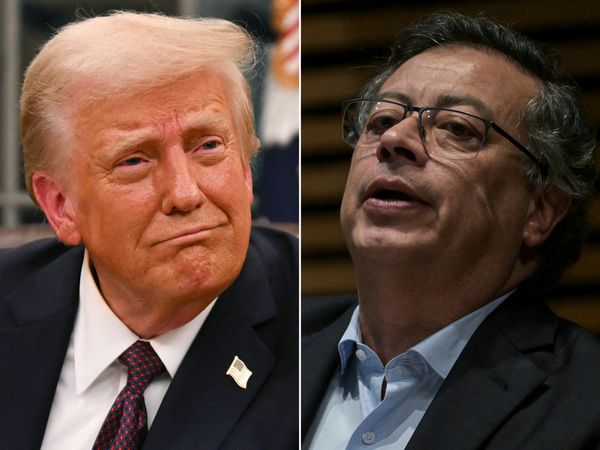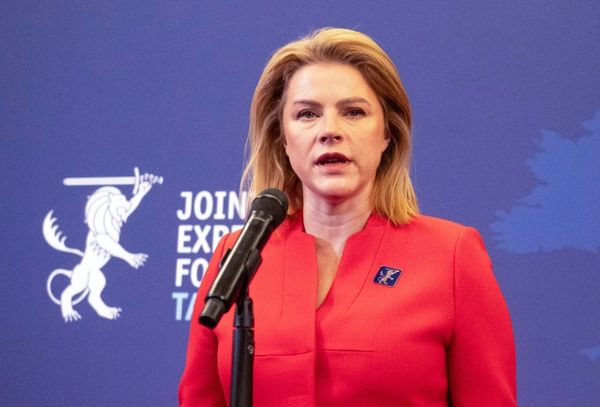
On Saturday, 90,612 fans attended the Melbourne Cricket Ground to see Collingwood defeat Fremantle in the AFL’s first semifinal. It was just the second match this year with a crowd exceeding 90,000, after the first qualifying final between Geelong and Collingwood the week before. Both were blockbusters by Australian standards.
In 126 years of VFL/AFL football, only 13 home-and-away matches have attracted an audience of more than 90,000. Ten of them featured Collingwood.
Halfway round the world, also on Saturday, the University of Texas Longhorns hosted the Alabama Crimson Tide. More than 105,000 fans packed Darrell K Royal-Texas Memorial Stadium. This was for a college football game. All the players were students.
Texas is the richest college football team in the United States. Alabama is the top-ranked team in the country. They do not play in the same conference, so this was a rare match-up. The two titans last met in the 2010 National Championship Game at the Rose Bowl in Pasadena, California. Alabama won that showdown 37-21, kickstarting a remarkable run of six national titles in 12 seasons under head coach Nick Saban. Never heard of Saban? He’s a household name in America.
Before the COVID-19 pandemic’s impact on public assembly, the Longhorns’ three-year average annual revenue was US$147 million. Alabama’s was US$134 million. Texas’ average annual profit exceeded US$90 million. By comparison, Collingwood’s revenue for the 2019 financial year was A$72 million, for a profit of A$12 million. At the prevailing exchange rate, Collingwood’s receipts were one-third of Texas’ haul, despite playing almost double the number of fixtures.
The Longhorns play seven games each year at their home stadium. The other 358 days the field stands idle. No concerts. No graduation ceremonies. Certainly no other sports are permitted to use it. The football team has a separate ground for practices. DKR-Texas Memorial Stadium is sacred turf reserved for game days only. Despite this, in 2019 the university embarked upon a US$175 million stadium expansion to upgrade team and staff facilities, and construct more outdoor seating and corporate boxes. Topping it off was a new 48.77-metre wide by 13.41-metre high video screen. The MCG’s twin scoreboards, the largest at an Australian sports ground, measure 25.24 metres by 13.17 metres each — half the size of Texas’ jumbotron.
Texas’ stadium isn’t even the biggest in college football. That honour goes to the University of Michigan in Ann Arbor, with a 107,601 capacity. Eight colleges, including Texas and Alabama, can host more than 100,000 spectators and do so regularly. Forty colleges can accommodate 61,500 or more. Only the MCG and Stadium Australia match this.
Across the 669 teams nationwide in 2019, attendances topped 47.5 million, with 145 million unique viewers watching a game during the season. This made it the second-most-viewed sport behind the professional National Football League.
While football is the gorilla of college sports, it’s just one piece in the university athletics ecosystem. Basketball is another big drawcard. The annual March Madness tournament features a knockout series between the best 68 men’s and women’s college teams in the land. Ahead of the tournament, millions of Americans pick their brackets to guess which school will triumph. It’s equivalent to the Melbourne Cup sweeps for the first Tuesday in November. Even the White House joins in.
Altogether the US college sports complex is a massive industry, worth US$18.9 billion in 2019. The profits big schools earn from football and basketball are funnelled into their college athletics departments to support myriad less-marketable sports, including key Olympic disciplines such as swimming, track and field, and gymnastics, as well as niche codes such as bowling and lacrosse. According to the National Collegiate Athletic Association, the peak body for college sport, half a million athletes comprising almost 20,000 teams from 1100 schools compete for 90 championships in 24 sports each year.
This data affords a perspective on the scale of US college sports. However, numbers alone don’t reveal the full extent of their impact on American society. Annual calendars revolve around the rhythms of each season. Small towns like State College, Pennsylvania, and Clemson, South Carolina, swell on game days as fans flock from hundreds of kilometres around to cheer their teams. Local businesses rely on their cash infusion to stay afloat.
School spirit is imbued not just by the contests, but by the rituals that accompany them. Pre-game tailgating brings friends and families together like the Boxing Day Test. School bands blast marching songs. Cheerleaders rev up the crowds. Mascots are ubiquitous — both those in costume and live animals. College sports are the reason Americans wear their universities’ names with pride, and Australians don’t.
Interschool rivalries pass down the generations. Texas/Oklahoma. Alabama/Auburn. Michigan/Ohio State. Duke/North Carolina. These are absorbed in childhood, bonding communities in solidarity. Many fans never attend their team’s college, but that’s no impediment. If you road-trip across America you will hear four things on the AM dial: political talkback, Christian preaching, Spanish language stations and sports.
Beyond this, college sports are a gateway to lucrative professional sports. Before he won the Masters, Tiger Woods played golf for Stanford, where he captured the NCAA individual trophy. Michael Jordan led North Carolina to the national title, en route to becoming the greatest basketball player in history. Mia Hamm, also a Tar Heel, won four national championships along with her Olympic golds and World Cups.
College sports also provide a springboard for other pursuits. Tommy Tuberville was the head football coach of Auburn University Tigers for a decade, during which he steered them to the SEC championship. In 2020, he parlayed his name recognition by winning election to represent Alabama in the US Senate. Before he joined the NFL, Herschel Walker was a Heisman Trophy running back and track star for the University of Georgia Bulldogs. On the back of this fame, Republicans have nominated Walker to be their US Senate candidate in Georgia this November. Walker’s campaign has been riddled with controversy. Neither Tuberville nor Walker had any political experience before their Senate candidacies. Remember Nick Saban? If he ran for governor of Alabama, he would win hands down. These examples illustrate the broader influence of college sports.
In the dying moments of Saturday’s contest, Texas fans erupted in joy as their kicker Bert Auburn nailed a clutch 49-yard field goal to take the lead. With 1:29 remaining on the clock, the Crimson Tide drove the ball down the field to within striking range. With 10 seconds left, Alabama’s kicker Will Reichard split the uprights from 33 yards, for a 20-19 victory that broke Longhorns’ hearts.
At least Texas won’t have to wait another dozen years for revenge. They have agreed to join Alabama in the SEC by 2025, if not sooner. A new rivalry beckons.







